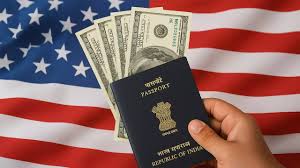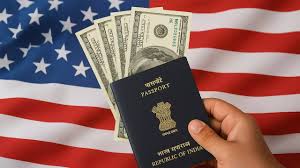
The U.S. government has announced a massive New H-1B Visa Fee Hike 2025 , setting the cost at $100,000 per year (approx 80 Lakh INR ) for each of the sponsored employee. This new rule, effective September 21, 2025, has sparked widespread debate in both countries. With Indians forming over 70% of H-1B holders, the impact on the Indian IT industry and India–US diplomatic relations is significant in the context of USA – India tariff war.
💵 What Are the New H-1B Visa Fees in 2025?
Annual fee: USD $100,000 per H-1B employee. Previous fee was only $995 per visa. That’s an increase of almost 100 times something never heard of before.
Effective from: September 21, 2025, valid for one year (subject to extension).
Applies to: New petitions filed for workers outside the U.S. and certain cases where employees travel abroad while petitions are pending.
Exemptions: Some sectors (national interest fields) may be exempt.
👉 Previously, H-1B filing fees were only a few thousand dollars, meaning this is a game-changing increase.
🔍 Why Did the U.S. Raise the H-1B Visa Fee?
The U.S. administration under Donald Trump justifies this move as:
- Protecting American jobs – discouraging overreliance on cheap foreign labor.
- Targeting visa misuse – preventing companies from using H-1Bs for cheap labor and use US labor thus helping job growths.
- High-skill focus – Ensuring only the most valuable talent comes to America in line with golden visa scheme.
Impact on India and Indian IT Companies
Indian IT sector hit will be hit hardest. Indian IT bigwigs like Infosys, TCS, and Wipro rely heavily on H-1B offshore talent and pay Indian talent handsomely.
Massive cost burden – $100,000 per employee is definitely going to force Indian firms to cut back U.S. hiring.
Disruption to families – The Indian Ministry of External Affairs has raised concerns over humanitarian consequences. The repatriation of Indian talent is going to be in thousands.
Brain drain risk reversal – Indian professionals may now prefer jobs in Canada, UK, Europe or elsewhere.
Impact on U.S. Companies and Economy
Big tech affected – Microsoft, Amazon, and Google warned employees about travel deadlines.
Startups hurt – Smaller U.S. companies may not be able to afford the new fee.
Risk of offshoring – Projects may move back to India or other cheaper markets.
🌏 India–US Relations: A New Flashpoint
Diplomatic strain – India has already expressed concern, warning of negative humanitarian and trade impacts.
Trade friction intensifies – fee hike comes amid 50 % U.S. tariffs hikes on Indian imports which has deeply affected Indian textile and Gems & Jewelry industry.
Policy pushback possible – India may renegotiate exemptions or raise this in bilateral talks.
Innovation ties at risk – over 70% of H-1B visas are held by Indians, meaning this could weaken tech collaboration.
📈 Future Outlook
Legal challenges in U.S. courts could arise and things might depend on pending decisions.
Exemptions for crucial sectors like healthcare, defense, or AI are possible.
Remote work and offshoring may increase, as firms move jobs out of the U.S. to cheaper locations.
Indian professionals may look at alternative destinations like Canada or Europe.
More US based companies will establish GCC centres or increase hiring in India because Indian IT talent is highly skilled and cheap.
✅ Conclusion
The new H-1B visa fee of $100,000 per year marks the most dramatic shift in U.S. immigration policy in decades. While the U.S. government frames it as protecting American workers, the move could hurt U.S. tech competitiveness and put pressure on India–US relations. For Indian IT companies and professionals, this is both a financial and emotional challenge.
The next few months will be crucial- whether exemptions emerge, diplomatic talks soften the impact, or companies restructure their global hiring strategies.

